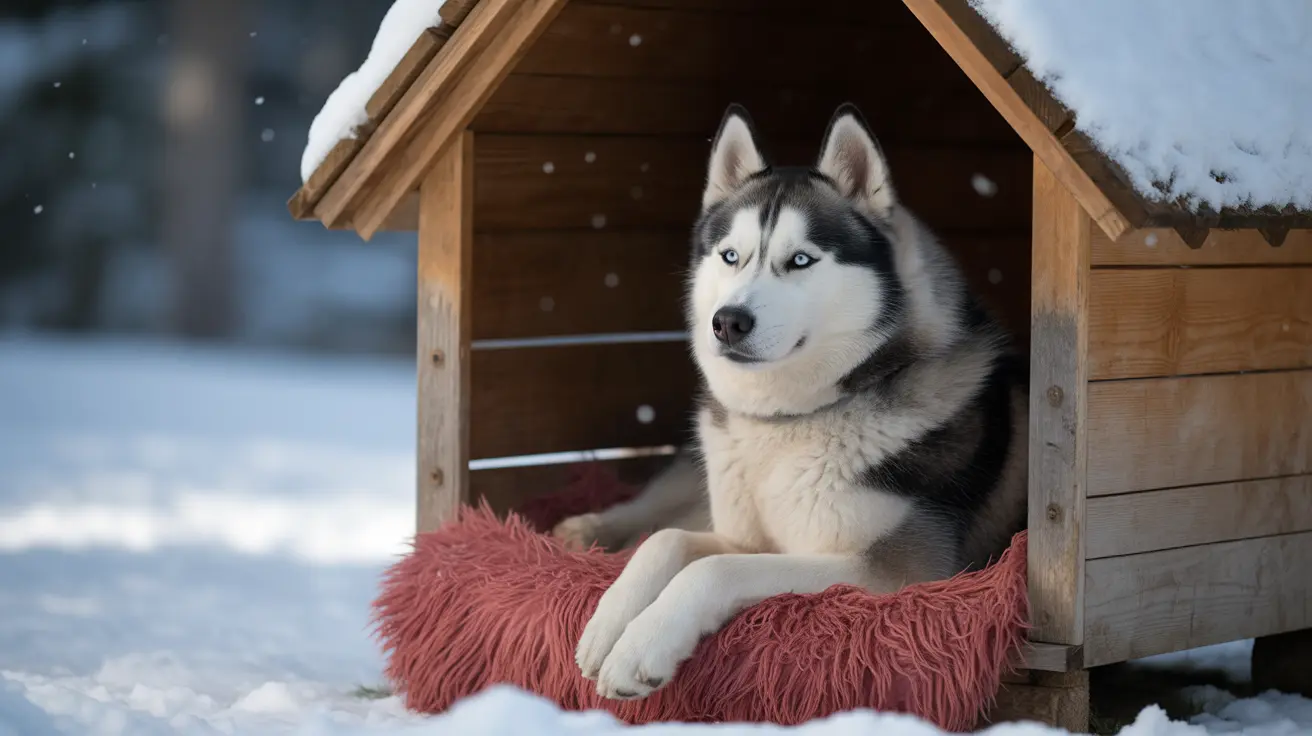As winter approaches, many pet owners wonder about the safe temperature limits for their dogs sleeping outdoors. While some breeds are built for cold weather, others need extra protection when temperatures drop. Understanding these limits is crucial for keeping our furry friends safe and comfortable during cold nights.
In this comprehensive guide, we'll explore the specific temperature thresholds that determine when it's too cold for dogs to sleep outside, along with essential factors that influence their cold tolerance and practical steps to ensure their safety.
Understanding Temperature Thresholds for Dogs
Generally, most dogs begin to feel uncomfortable when temperatures fall below 45°F (7°C). However, the exact temperature that becomes dangerous varies significantly based on several key factors. While some hardy breeds can tolerate temperatures around freezing, others need protection much sooner.
Here's a general breakdown of temperature ranges and their implications:
- 45°F to 32°F (7°C to 0°C): Monitor closely, especially smaller breeds
- 32°F to 20°F (0°C to -6°C): Dangerous for most dogs
- Below 20°F (-6°C): Potentially life-threatening for all breeds
Breed-Specific Cold Tolerance
Different dog breeds have varying levels of cold tolerance based on their genetic makeup and physical characteristics:
Cold-Weather Breeds
- Siberian Huskies
- Alaskan Malamutes
- Saint Bernards
- German Shepherds
Breeds Needing Extra Protection
- Chihuahuas
- Greyhounds
- Pit Bulls
- Short-haired breeds
Critical Factors Affecting Cold Tolerance
Physical Characteristics
Several physical factors influence how well your dog can handle cold temperatures:
- Size and weight
- Coat thickness and type
- Age and health condition
- Body fat percentage
Health and Age Considerations
Certain dogs are particularly vulnerable to cold weather:
- Puppies
- Senior dogs
- Dogs with arthritis
- Those with heart or respiratory conditions
Creating Safe Outdoor Sleeping Conditions
If your dog must sleep outside during cooler weather, proper shelter is essential:
Shelter Requirements
- Elevated structure
- Waterproof roof
- Insulated walls
- Wind-blocking entrance
- Proper size (large enough to move, small enough to retain heat)
Bedding and Comfort
- Fresh straw or cedar shavings
- Thermal blankets
- Self-warming pet beds
- Regular bedding changes to prevent moisture
Warning Signs Your Dog Is Too Cold
Watch for these indicators that your dog needs to come inside:
- Shivering or trembling
- Lethargy or weakness
- Whining or barking
- Seeking warm places
- Lifting paws off the ground
- Hunched posture
Frequently Asked Questions
What temperature is too cold for dogs to sleep outside safely?
Generally, temperatures below 45°F (7°C) require monitoring, while temperatures below 32°F (0°C) are dangerous for most dogs. No dog should sleep outside when temperatures fall below 20°F (-6°C), regardless of breed or condition.
How do breed, size, and coat type affect a dog's tolerance to cold weather outside?
Large, double-coated breeds like Huskies can tolerate colder temperatures better than small, short-haired breeds. Size matters because larger dogs retain heat better, while coat type provides natural insulation against cold.
What signs indicate my dog is too cold and should be brought indoors immediately?
Key signs include excessive shivering, lethargy, whining, seeking shelter, lifting paws, and hunched posture. If you notice any of these signs, bring your dog inside immediately.
How can I properly shelter and protect my dog if they must stay outside in cold temperatures?
Provide an elevated, insulated shelter with wind protection, warm bedding, and ensure it's the right size. Include fresh water that won't freeze and check regularly for comfort and safety.
Are puppies, senior dogs, or dogs with health issues more vulnerable to cold, and how should their outdoor time be managed?
Yes, these groups are especially vulnerable to cold weather. They should be kept indoors during cold weather, with only brief supervised outdoor breaks for necessary activities.
Conclusion
While some dogs can tolerate cold weather better than others, it's crucial to err on the side of caution when deciding whether to let your dog sleep outside. Consider your dog's individual characteristics, provide appropriate shelter if needed, and always watch for signs of distress. When in doubt, bringing your dog inside is the safest choice.
Remember, your dog's comfort and safety should always be the priority, regardless of their breed or usual outdoor habits. If temperatures are approaching freezing, it's best to provide indoor accommodations for your furry friend.






